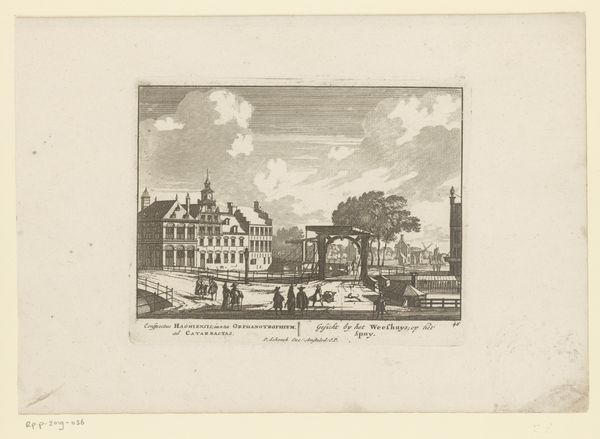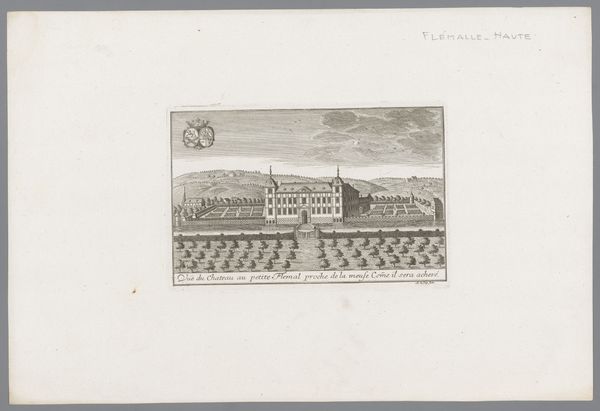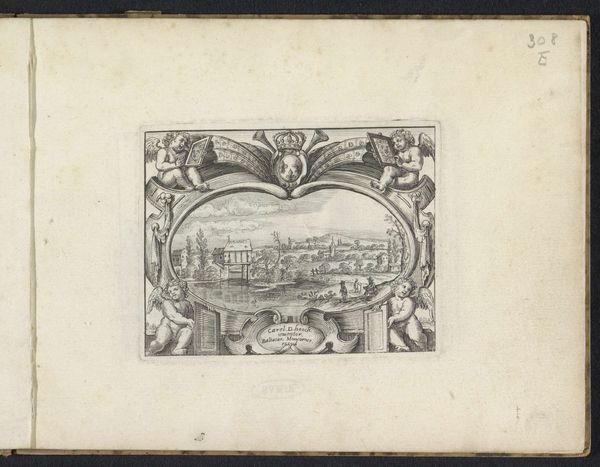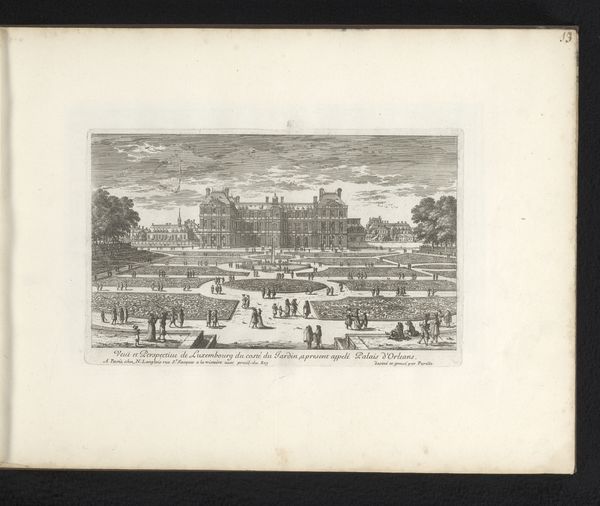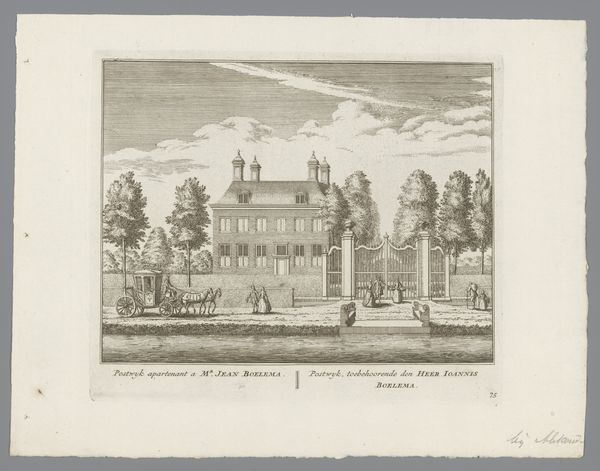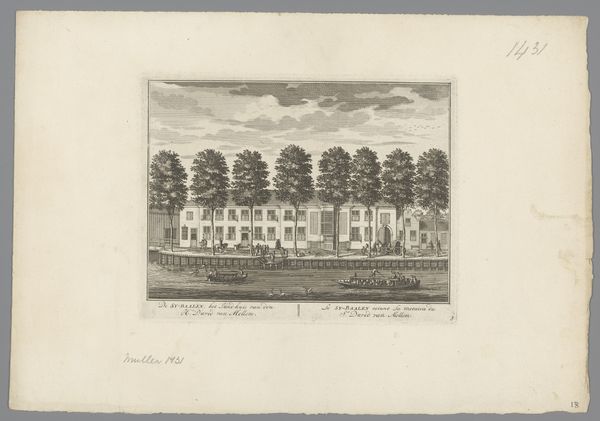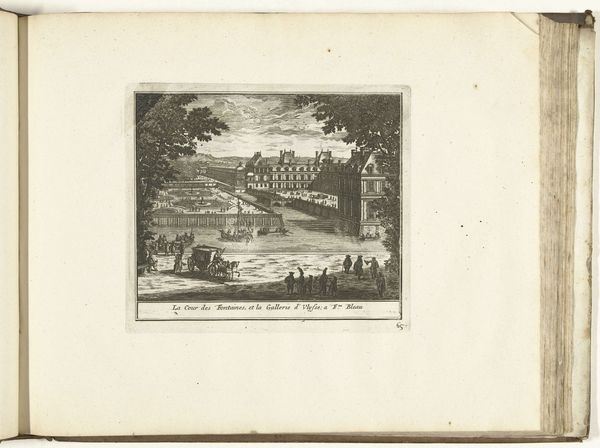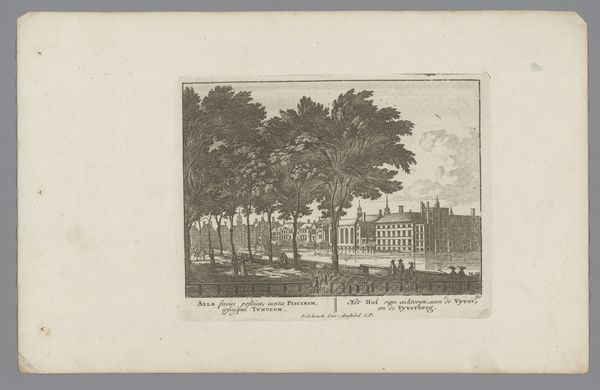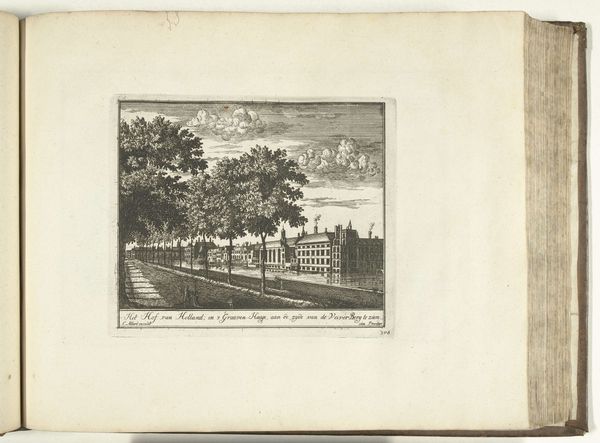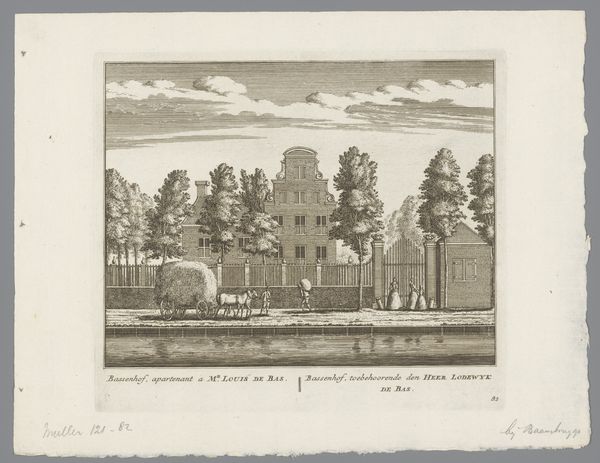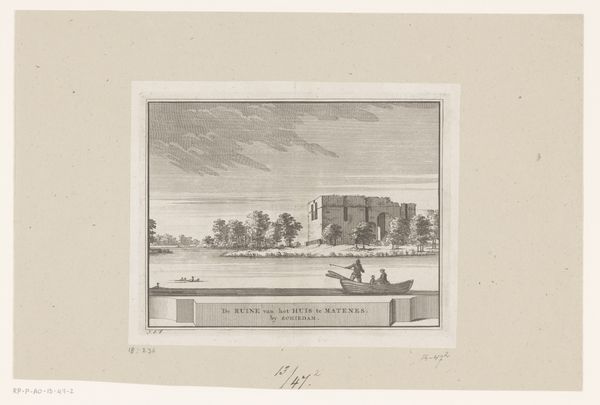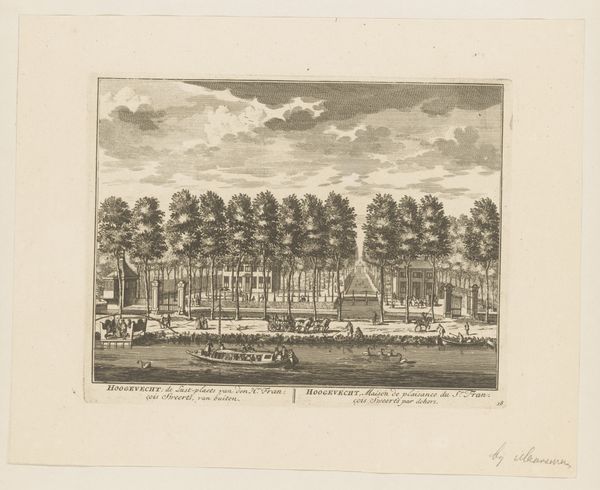
print, engraving, architecture
#
baroque
# print
#
old engraving style
#
cityscape
#
engraving
#
architecture
Dimensions: height 128 mm, width 162 mm
Copyright: Rijks Museum: Open Domain
Curator: Here we have a fascinating print titled "Custom House in Londen, 1726," an anonymous creation dating back to the 18th century. What’s your immediate take? Editor: Bleak grandeur, I'd say. There's a starkness to the scene. That solid architectural presence and detailed linear depiction feel like watching a stage set, maybe even hinting at an ending... or maybe customs are just sad for some people. Curator: Well, you've picked up on something important: the architecture itself. The Customs House symbolizes power and commerce. Back in that era, printmaking played a crucial role in disseminating images of important structures to a wide audience. I bet people collected this in scrapbooks. Editor: Right, and look at how the ships and figures are dwarfed. The Custom House becomes a representation of control, and that slightly ominous cloud reinforces that looming authority. Think of the symbols represented. Are we seeing just a building, or an entity? Curator: Interesting, but for me it's the small details. The way light is rendered through the delicate hatching, and those tiny figures going about their business… there’s an attempt to create a sense of everyday life bustling in the heart of the big city. Baroque, in its own way, perhaps a formal one. Editor: And Baroque loved symbolic display. Consider how the water reflects—or perhaps distorts—the structure's image. Water as a visual device has represented transition, journeys, and the subconscious mind for ages. Makes me wonder about the state of British trade in 1726. Curator: True, there is complexity here, which rewards further investigation. Editor: Yes, I appreciate that contrast—this stark yet intricately made image acting like a memory: both immediate and echoing.
Comments
No comments
Be the first to comment and join the conversation on the ultimate creative platform.
